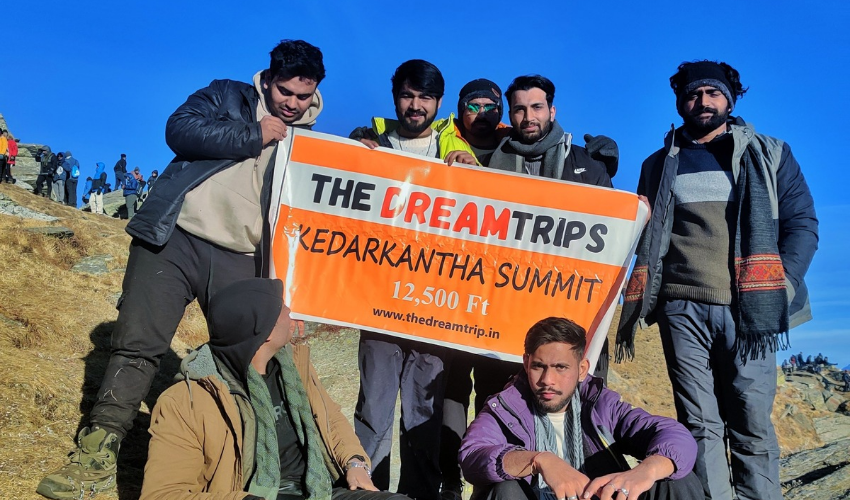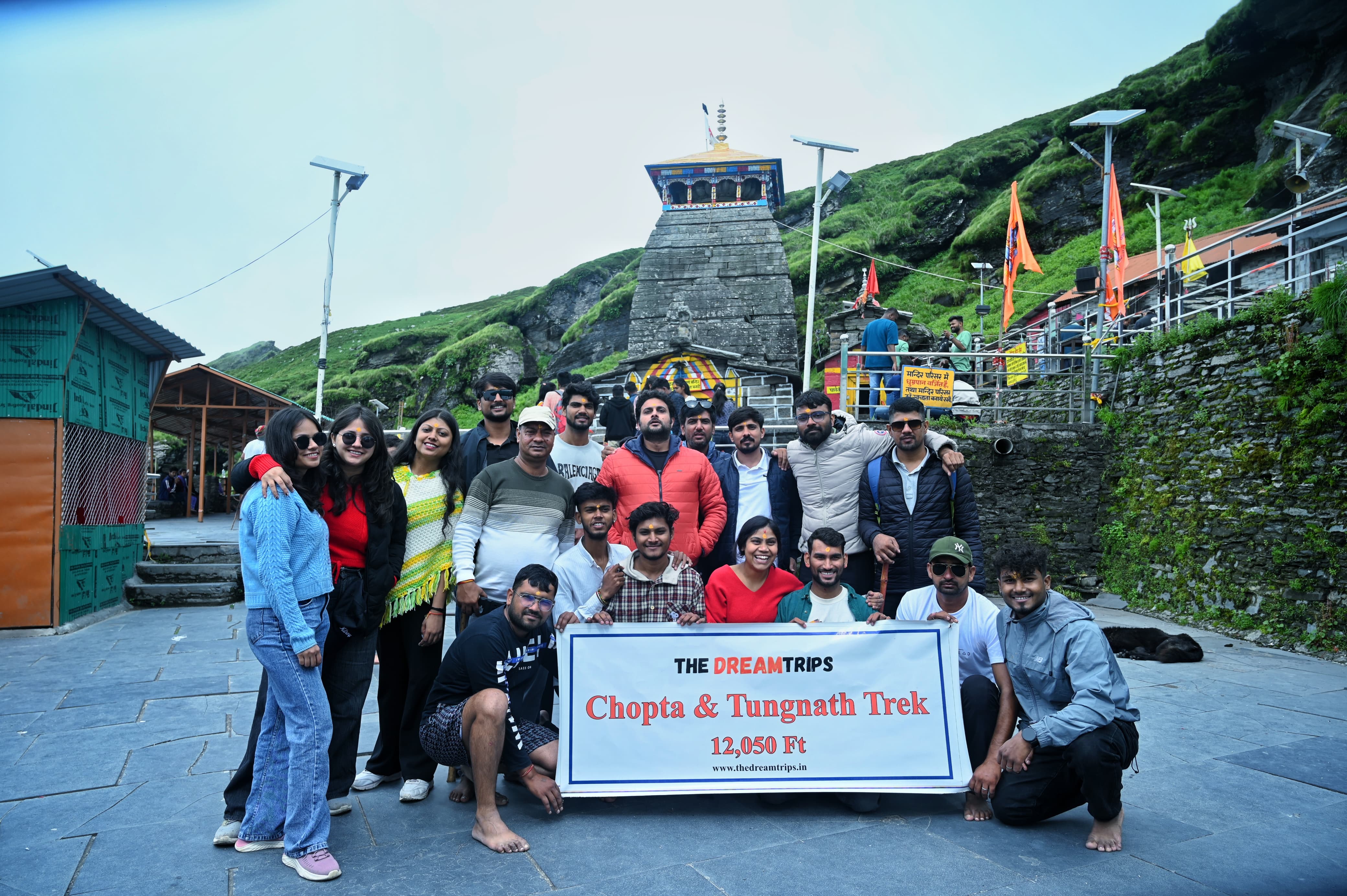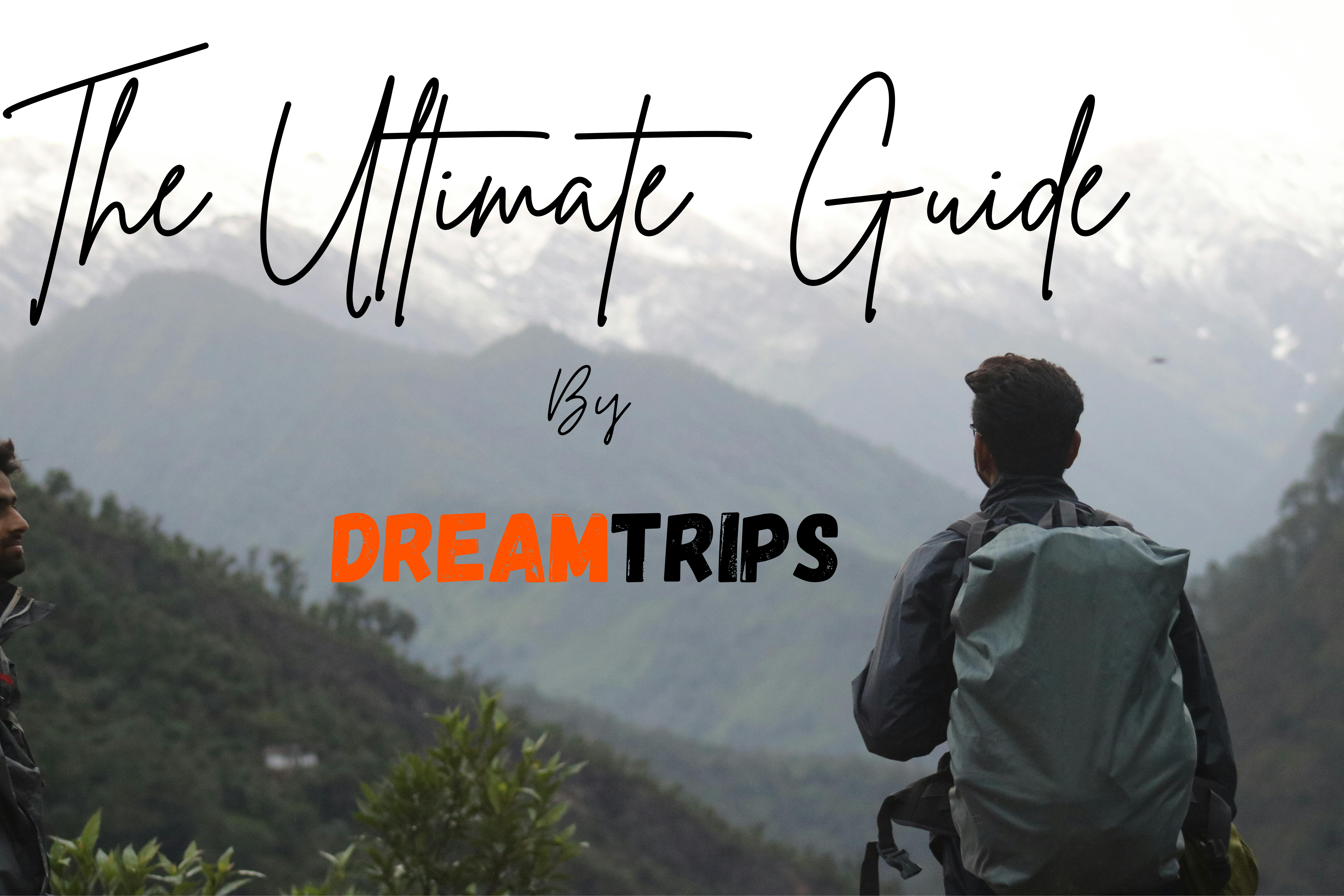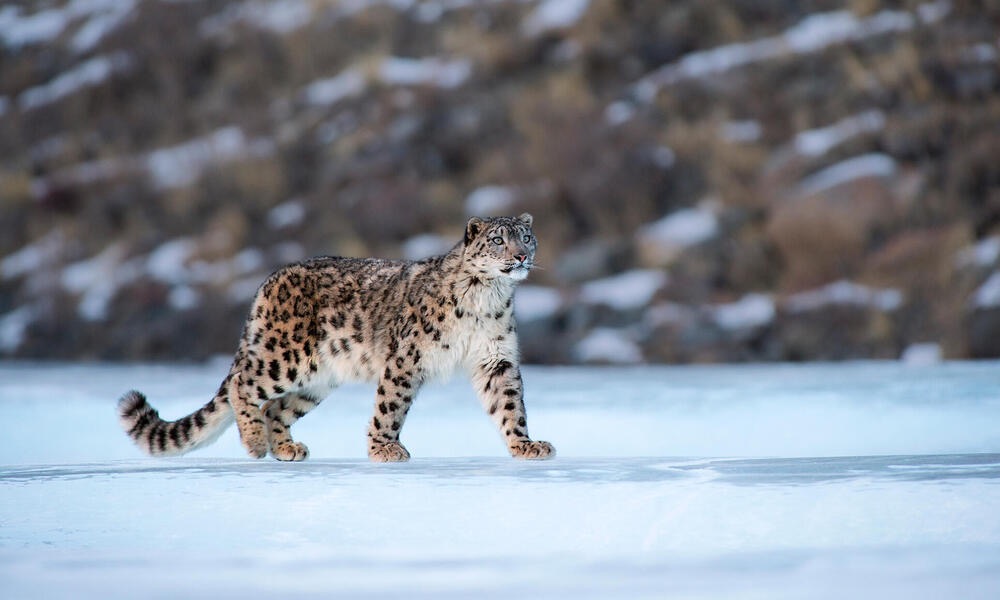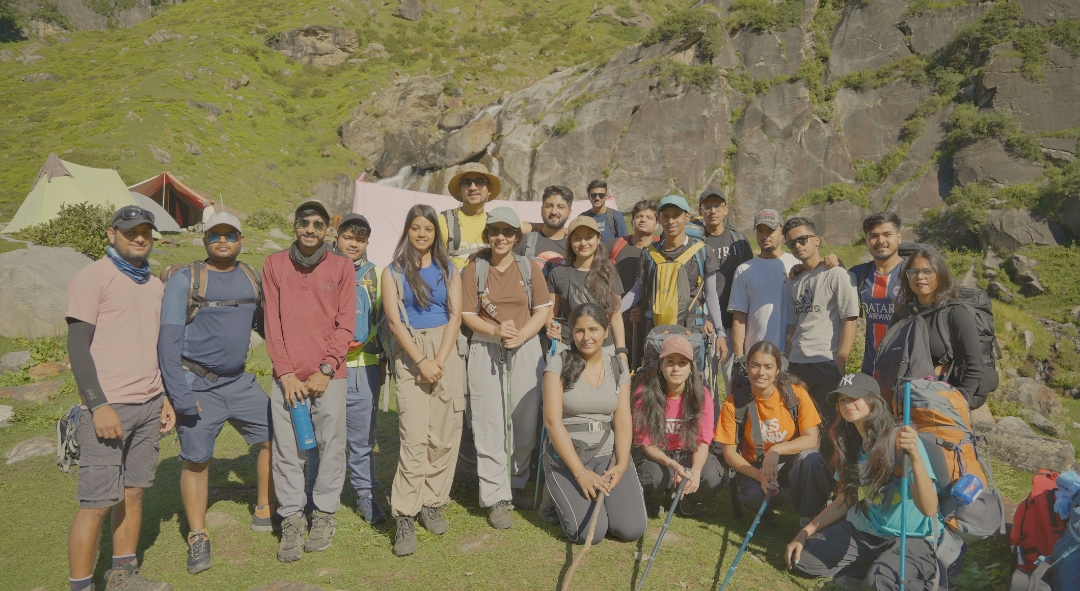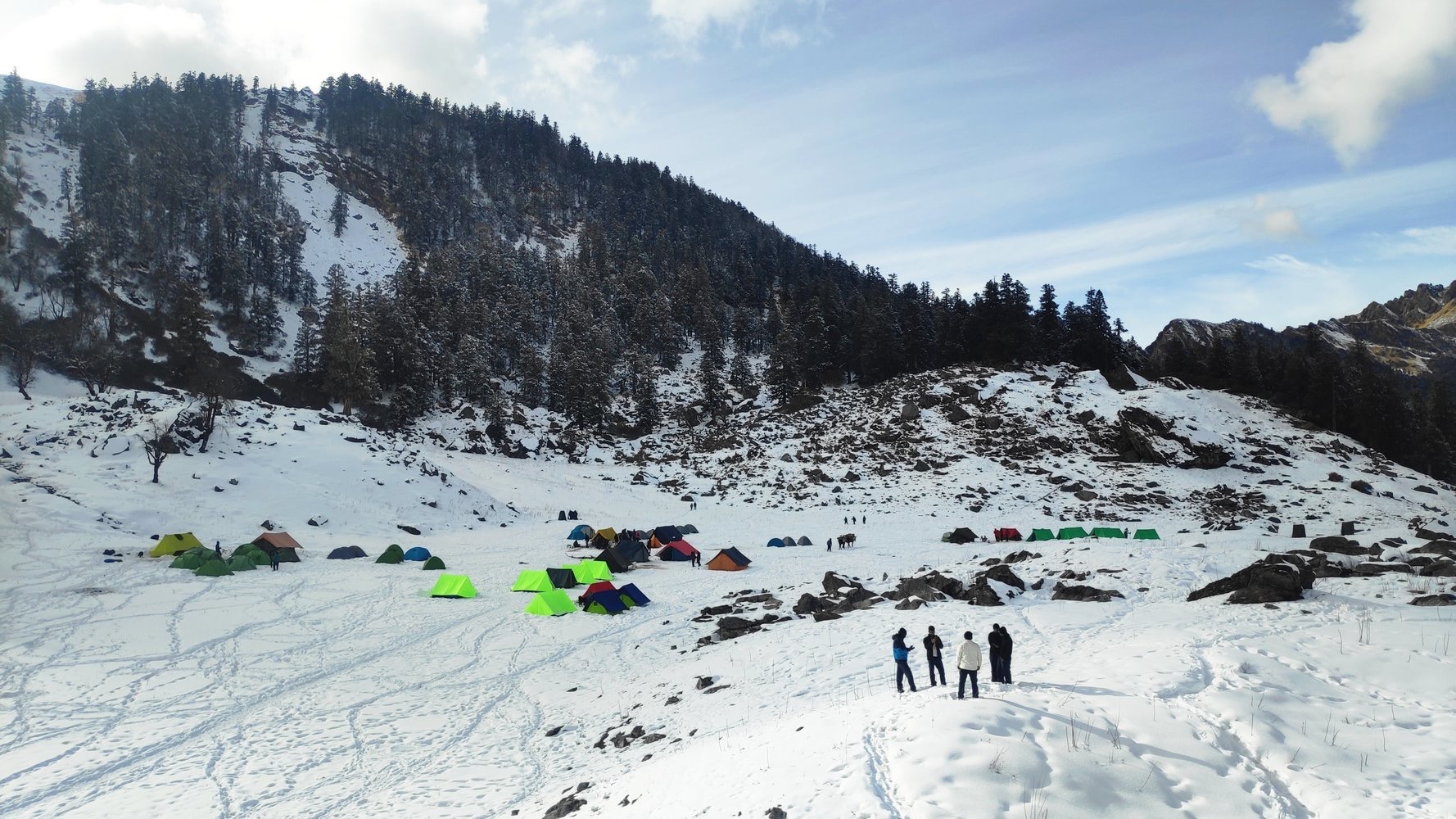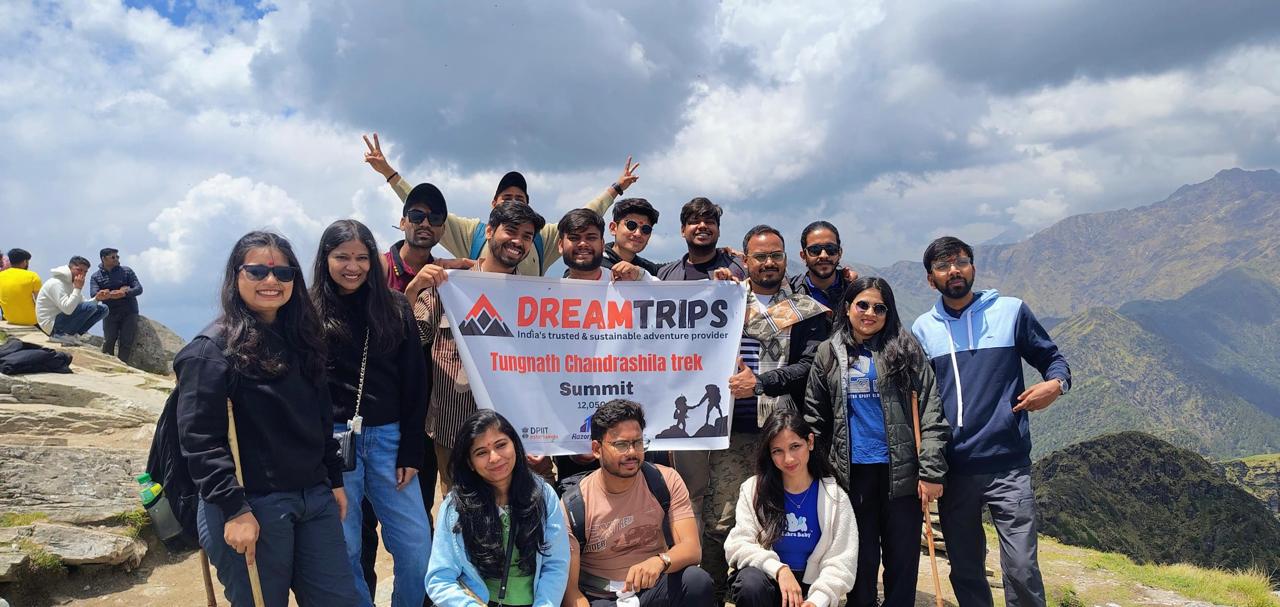
A complete guide to Kedarkantha trek
An overview of the Kedarkantha Trek with Dream Trips
Located at an altitude of 12,500 feet, the Kedarkantha Trek is well known for its amazing winter beauty. The trek is perfectly made for those looking for an extremely beautiful snow-covered landscape trek in India. Lush green pine forests, charming villages, and panoramic views of the Himalayan peaks, surrounds the marks of the trek, making it one of the most scenic treks in the country.
The adventurer will have to spend 6 days to complete the beautiful trek, with each day offering a memorable experience, from wandering through dense forests to arriving at the summit where the people can enjoy a 360-degree view of ice-covered frozen peaks. In terms of difficulty, the trek can be considered average, though quite perfect for beginners , moreover it does require a good level of strength or fitness
Kedarkantha Trek Itinerary
Day 1: Arrival in Sankri
Your journey to Kedarkantha begins with a drive to Sankri, the base camp for the trek. A scenic and lovely village Sankri , based in the Uttarkashi district ,serves as the kick off point for most trekkers.
How to Reach Sankri: The nearest major city to Sankri is Dehradun, which is well-connected by road, rail, and air. Starting from the city Dehradun, personal vehicle or a shared cab to Sankri would help, and the jouney would take almost about 10 hours. More other possibilities to reach Sankri, may be a bus or cab from Haridwar or Rishikesh
After the arrival at Sankri, a guesthouse or campsite is available for the overnight stay, adjusting to the altitude of the trek
Day 2: Sankri to Juda Ka Talab (5 km, 4-5 hours)
The trek starts with a gradual ascent through dense pine forests. Moving up, tiny streams will be crossed by the trekkers, witnessing the flourishing beauty of the ice-covered scenario. And arriving at the destination for the day, Juda Ka Talab which is a lovely alpine lake embraced by tall trees. An absolute perfect area for those loving the camps and spending the soothing environment and aerial views around
Day 3: Juda Ka Talab to Kedarkantha Base (4 km, 3-4 hours)
On the third day, the trek continues with a slightly steeper climb towards the Kedarkantha Base. Wandering about the ice-covered plots and hilly view of the surrounding peaks like Swargarohini, Black Peak, and Bandarpoonch emerges. After arriving at the base camp, you can take rest, take a look over beautiful view, and tranquilness of the place.
Day 4: Kedarkantha Base to the Summit and then back to Juda (6 km, 7-8 hours)
The trekkers should be ready for the climb for the trek on this 4th day. Beggining your climb to the Kedarkantha summit on the early morning of this day. The climb concluding the trek is a exciting experience with snow-covered , mountainous scenes, assuring the breathtaking scenario from the hillside. After the arrival at the summit, a 360-degree view of clouded, snow-covered peaks like Nanda Devi, Trishul, and Gangotri. And for the night, you will head back to Juda ka talab after settling some time up at the peak
Day 5: Juda ka talab to Sankri (8 km, 5-6 hours)
On day 5, Sankri will be reached by following the same way up used in the previous days. The adventurer, voyaging back to their base must note the scenerios of the captivating lushes, hills and forests on his way back. After arriving at Sankri, there will be some rewind time before the descending journey is carried out.
Day 6: Checking out of Sankri
The sixth day marks the end of the Kedarkantha trek; this is after breakfast which is taken before checking out from Sankri.
The best time to Visit Kedarkantha
While going for the Trek can pretty much be done over the whole year, there is a better or the optimal time to do this, which is between December to April.
Winter (December to February): This is the most popular season to go for Wonderful Kedarkantha Trek in the field. For winter sports enthusiasts, this season is the best as entire scenery during this time of the year is wrapped around snow. The temperatures at night fall to around then degree Celsius and that means trekkers have to be well equipped with suitable attire which ensures survival.
Spring Season (March to April): During this period of the year such as this one, the ice starts to melt down making the scenary transform into a beautiful green landscape with many flowers. This would be the time to make the trip for the people who don’t like extreme temperatures and only a bit of lite snows. The trek will at all times be covered with snow thus there is always a wonderful and incredible blend between winter and spring for the trek.
Monsoon (July to September): Kedarkantha Trek should generally be avoided during monsoon because of very harsh weather conditions of rainfall and wet roads. The chances of landslides also go up, hence not safe also.
Autumn (October to November): This is another better time for making the trip, as weather is bearable and the peaks further up the surrounding area can be seen with ease. Also for those who are looking for a weather that isn’t cold or heavy around and no harsh snowfall, this season is also good since the pathways are dry and therefore easier to navigate.
Cost Of Kedarkantha Trek
There are a few factors that may cause fluctuations in the cost through the year but Dream Trips is known for its affordablity and for the quality. But a typical price range of the trek during peak season falls between ₹6,000 to ₹7,500. Here is ts the content cost per person which is about the amount what is entailed in the cost-
Transportation: For most trekking packages with Dream Trips, the transport cost between Dehradun and Sankri is included within the package price.
In this case, if you are going somewhere by yourself, you have to procure your own transport, which can be around ₹1,500 and ₹3,000 in fare.
Accommodation: The expense also includes the provision for camping as well as the food during the trek. During the journey, the participants will be accommodated in tents for camping at Juda ka Talab, Kedarkantha Base, and other campsites Hargaon, etc.
Meals: Most of the time, breakfast, lunch, snacks, and dinner are served in the package, Dream Trips served meals are straightforward and healthy vegetarian food.
Guide and Porter Charges: Many packages also include the cost of a guide and some porters to carry the things required for the trip. People who have these services tend to enjoy the trek more and also feel safer doing it.
Permits and Miscellaneous: The trek may also include permits applicable for the Govind Wildlife Sanctuary as well as other different costs such as protective kits or equipment rentals.
Packing List for Kedarkantha Trek
To enhance your trekking experience some thorough preparation for it is required. Here is a packing list that will give you some thoughts on what to take.
- Clothing: Thermal wear, woolen socks, gloves, and high-quality jackets suitable for cold weather.
- Footwear: Good waterproofing and trekking shoes with good grips.
- Sleeping Bag: A good quality sleeping bag that is suitable for four seasons and is designed for warm conditions.
- Headlamp: A quality headlamp with spare batteries.
- Water Bottles: A single reusable water bottle to quench your thirst in style.
- Backpacks: It could be a day pack with all the necessities and a huge variety trekking backpack.
Miscellaneous: Sunscreen, personal medication, camera and a trekking pole for support purposes.
How to book?
The booking procedure is very easy, the simply click on blue highlighted KEDARKANTHA , choose your date , fill all the details in the booking portal and make a partial payment.
Yayyyy , your booking is done, we will handle the rest.
Conclusion.
Kedarkantha Trek is the best way to explore nature's beauty in the Himalayas of Uttarakhand with breathtaking views, snow capped trails and the journey becomes an experience of a lifetime. You can choose Dream Trips to trek in winter for the maximum snow experience or during spring for fresh warmth, this trek has it all. This guide has illustrated how with adequate planning, one can have a safe, fun-filled and economical trip to Kedarkantha.
By - Jubi Rahman

